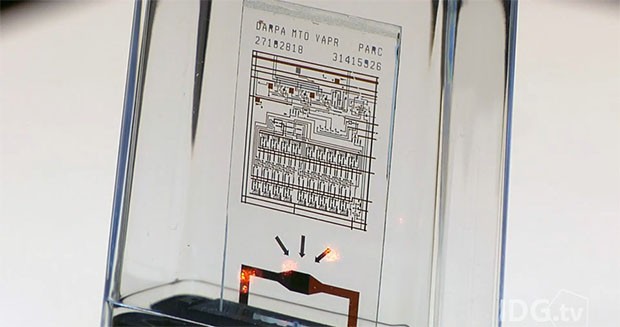It seems like something out of a Mission Impossible movie: a new chip built on glass that can shatter completely when triggered remotely. Unlike the one in Mission Impossible, this newly developed chip cannot self destruct within five seconds – the United States Army will have to make due with 10 seconds.
The chip was developed Xerox PARC for the United States Defense Advanced Research Projects Agency (“DARPA”) as part of their pursuit of “vanishing electronics.” Basically the chip will self destruct when directed to do so in order to keep secured data out of the hands of unauthorized and unwanted users. One practical use of the chip is so that certain technology cannot be reverse engineered by enemies of the United States.
Xerox PARC engineers created the chip on Corning Gorilla Glass, the material used in the display screens of several smartphones. However, the glass is strained, making it more susceptible to heat, and thus destruction. A circuit triggered by laser activates a resistor that warms up the chip to the point where it shatters into thousands of tiny fragments.
The creation of the chip came as part of DARPA’s Vanishing Programmable Resources initiative (“VARP”). DARPA’s mission for this program is stated as follows: “The VARP Program seeks electronic systems capable of physically disappearing in a controlled, triggerable manner. These transient electronics should have performance comparable to commercial-off-the-shelf electronics, but with limited device persistence that can be programmed, adjusted in real-time, triggered, and/or be sensitive to the deployment environment.”
The recent self destructing chip demonstration resulted as a laser-triggering photo diode switched on the self-destruct circuit.
In addition to the obvious military and data security uses, such a self-destructing chip can have health and medical applications. John Rogers, a materials science professor at the University of Illinois, has created a variety of biodegradable sensors and electronics that are compatible with both body organs and human skin.
Another benefit of self-destructing electronics is hopefully reducing the physical waste created by the dumping of broken and used electronics. This most likely would be accomplished by slowly dissolving as opposed to rapidly triggered self destruction.
While many of these initiatives might be realized by DARPA, it is clear that the immediate goal is to create a deliberately controlled self-destructing chip for military and data security purposes.
Stay Connected